 Technology
Technology  Technology
Technology  Humans
Humans 10 Everyday Human Behaviors That Are Actually Survival Instincts
 Animals
Animals 10 Animals That Humiliated and Harmed Historical Leaders
 History
History 10 Most Influential Protests in Modern History
 Creepy
Creepy 10 More Representations of Death from Myth, Legend, and Folktale
 Technology
Technology 10 Scientific Breakthroughs of 2025 That’ll Change Everything
 Our World
Our World 10 Ways Icelandic Culture Makes Other Countries Look Boring
 Misconceptions
Misconceptions 10 Common Misconceptions About the Victorian Era
 Mysteries
Mysteries 10 Strange Unexplained Mysteries of 2025
 Miscellaneous
Miscellaneous 10 of History’s Most Bell-Ringing Finishing Moves
 Technology
Technology Top 10 Everyday Tech Buzzwords That Hide a Darker Past
 Humans
Humans 10 Everyday Human Behaviors That Are Actually Survival Instincts
 Animals
Animals 10 Animals That Humiliated and Harmed Historical Leaders
Who's Behind Listverse?

Jamie Frater
Head Editor
Jamie founded Listverse due to an insatiable desire to share fascinating, obscure, and bizarre facts. He has been a guest speaker on numerous national radio and television stations and is a five time published author.
More About Us History
History 10 Most Influential Protests in Modern History
 Creepy
Creepy 10 More Representations of Death from Myth, Legend, and Folktale
 Technology
Technology 10 Scientific Breakthroughs of 2025 That’ll Change Everything
 Our World
Our World 10 Ways Icelandic Culture Makes Other Countries Look Boring
 Misconceptions
Misconceptions 10 Common Misconceptions About the Victorian Era
 Mysteries
Mysteries 10 Strange Unexplained Mysteries of 2025
 Miscellaneous
Miscellaneous 10 of History’s Most Bell-Ringing Finishing Moves
10 Ancient Books That Promise Supernatural Powers
Humankind has long dabbled in the supernatural, lured by the promise of obtaining power and enlightenment. Several texts have been devoted to this practice, outlining complicated and mysterious rituals presented as the key to achieving communion with otherworldly spirits.
10Greek Magical Papyri
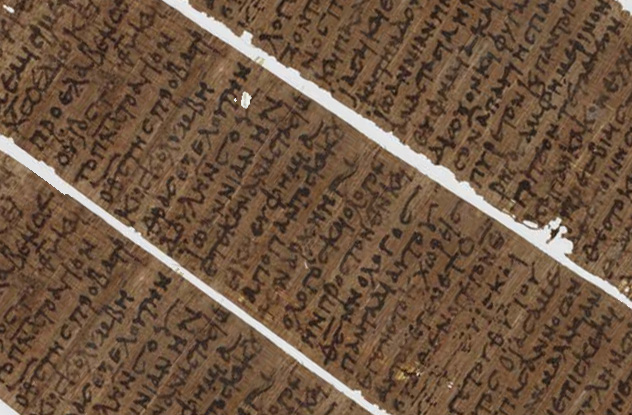
The Greek magical papyri from the second century B.C. listed spells, rituals, and divinations. These included instructions for how to summon a headless demon, open doors to the underworld, and protect yourself from wild beasts. Perhaps most tantalizing of all, they describe how to gain a supernatural assistant, an otherworldly entity who does your bidding.
The most commonly found spells in the Papyri are divination spells—ceremonies that offer you visions of the future. One of its most well-known passages provides instructions for how to forecast upcoming events using an “iron lampstead,” “an offering of frankincense,” and an “uncorrupted and pure” child. After being placed into a deep trance, the child sees images flickering in the flame.
Among the Papyri’s most famous components is the Mithras Liturgy. This ceremony describes how to ascend through seven higher planes of existence and communicate with the deity Mithras.
9The Black Pullet
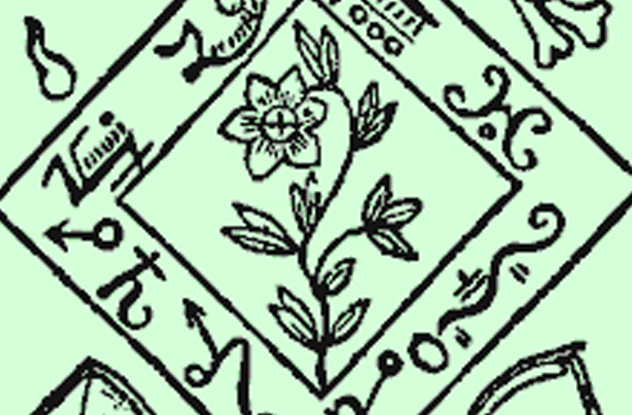
Originating in France in the 18th century, The Black Pullet focuses on the study of magical talismans, special objects engraved with mystical words that protect and empower the wearer. It was reportedly written by an anonymous officer in Napoleon’s Army, who claimed to have received the contents from a mysterious mage while on expedition in Egypt.
The Pullet includes detailed instructions for constructing talismans out of bronzed steel, silk, and special ink. Among these invocations is a spell to call upon a djinn, a creature made of smoke and fire to bring you true love. If your ambitions are slightly more cynical, then the Pullet also provides talismans that will force “discreet men” to tell you their secrets, allow you to see behind closed doors, and destroy anyone who is plotting against you.
The apex of the book’s mystical teachings is acquiring the Black Pullet itself—a hen that can find buried treasure.
8Clavicula Salomonis

The Key of Solomon the King or Clavicula Salomonis is a grimoire of medieval origin. It is supposed to be the work of King Solomon but is of later origin and was probably written in either the fourteenth or fifteenth century. Many manuscripts have survived. There are stories of a book of magic spells ascribed to Solomon as early as the first century; the historian Flavius Josephus stated that Eleazar the Jew exorcised devils with Solomon’s book. Stories of a ring of Solomon’s are also found in the Arabian Nights.
The Key is not an authentic Jewish work since it contains ancient concepts that may date from earlier Semitic or Babylonian times. It may have come to Europe through Gnostic channels and mixed with later kabbalistic notions. In its popular form, its chief use appears to be in finding treasure and performing magic rites to interfere with the free will of others. The Key tells you how to hinder a sportsman from killing any game, how to render oneself invisible, or how to know who has committed a theft. With incantations for conjuring, it gives lengthy instructions on bringing in and releasing various energies.
The power of the Divine Name is much in evidence, but the work appears to combine elements of both white and black magic. The Lemegeton (Lesser Key of Solomon) is much more noteworthy. Its earliest examples date from the seventeenth century, and it invokes the hierarchies of the abyss by legions and millions. It is divided into four parts that enable the operator to control the offices of all spirits.
7Picatrix
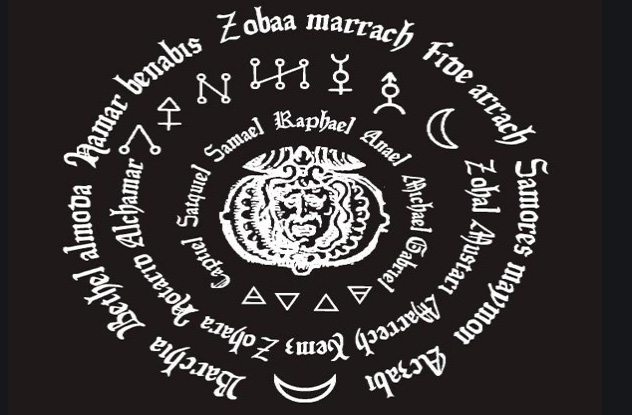
The Picatrix is an ancient grimoire of astrological magic. Originally written in Arabic and titled the Ghayat Al-Hakim, it dates back to the 11th century and spans a mammoth 400 pages of astrological theory. Alongside are spells and incantations to channel the occult energies of planets and stars to achieve power and enlightenment.
The Picatrix is perhaps most notorious for the obscenity of its magic recipes. These gruesome and potentially deadly concoctions are designed to induce altered states of consciousness and out-of-body experiences. Not for the faint of the heart, their ingredients include blood, bodily excretions, and brain matter mixed with copious amounts of hashish, opium, and psychoactive plants. To construct a mirror that gives you power over the dead, for example, you must use noxious fumes of “blood, sperm, spit, ear wax, tears from the eyes, feces, and urine.”
6Galdrabok
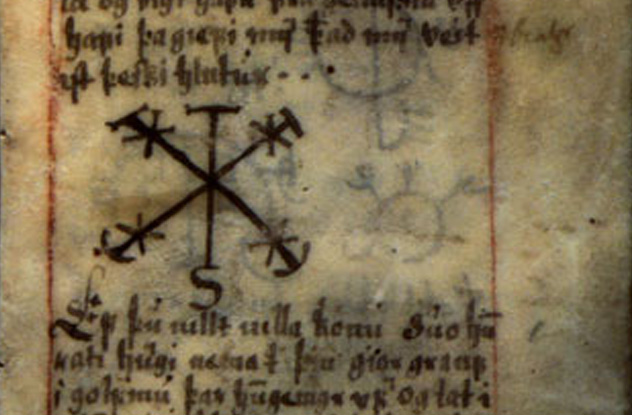
An Icelandic grimoire that originated in the 16th century, the Galdrabok is a collection of 47 spells compiled by multiple magicians. Like most Icelandic magic of the period, the Galdrabok relies heavily on staves—runes that have magical properties when carried on the body, carved on objects, or written out. Among the staves drawn in the Galdrabok are ones to attract and curry the favor of powerful men, incite fear in your enemies, and put someone to sleep.
The majority of the spells found in the Galdrabok are “apotropaic spells,” benign remedies designed to protect the practitioner and heal various maladies. These include tiredness, difficulty with childbirth, headaches, and insomnia.
Other spells are pretty peculiar in nature. Spell 46, the hilariously titled “Fart Runes,” is a stave that will strike your enemy with “bad gas . . . and all of these will plague thy belly with great farting . . . may thy farting never stop.” Some are downright sinister. Spell 27, for example, when drawn on someone’s food, will make them sick and unable to eat all day, while Stave 30 is designed to kill another person’s animal. There are also staves to prevent your house from unwanted visitors, catch thieves, and “get satisfaction in a legal case.”
5Arbatel De Magia Veterum
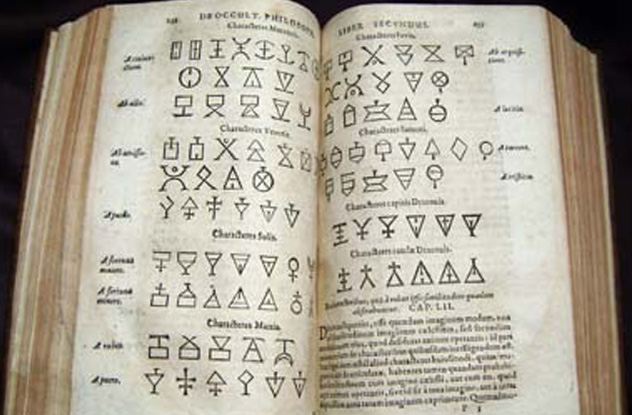
Composed late in the 16th century by an unknown author, the Arbatel de Magia Veterum is a comprehensive handbook of spiritual advice and aphorisms. The Arbatel reads much like a mystical self-help book, stressing the importance of Christian godliness, productivity, positive thinking, and using magic to help instead of harm. Its kernels of wisdom include “live for yourself and the Muses; avoid the friendship of the multitude” and “flee the mundane; seek heavenly things.”
The Arbatel reveals a series of rituals to invoke the seven heavenly governors and their legions, who rule over the provinces of the universe. The governors include Bethel, who brings miraculous medicines, Phalec, who brings honor in war, and Aratron, who “maketh hairy men.” However, the ability to perform these rituals is only for a person who is “born to magic from his mother’s womb.” All others, the Arbatel warns, are powerless imitators.
In addition to angels and archangels, the Arbatel mentions a coterie of other helpful elemental spirits that exist beyond the veil of the physical world, including pygmies, nymphs, dryads, sylphs (tiny forest people), and sagani (magical mortal spirits that inhabit the elements).
4Ars Notoria
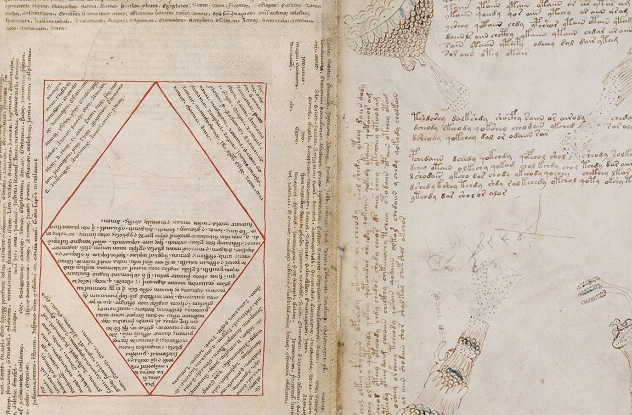
A Solomonic grimoire compiled in the 13th century, the Ars Notoria does not contain any spells or potions. It focuses instead on the acquisition of learning, the command of memory, and gaining insight into difficult books.
The Ars Notoria promises practitioners the mastery of liberal arts—geometry, arithmetic, and philosophy among them—through a lengthy daily process of visualization, contemplation, and orations. Through these orations, you can beseech God for intellectual gifts, including eloquence, heightened senses, wisdom, and perfect memory.
As a book concerned primarily with enlightenment, the Ars Notoria eschewed some of the more malevolent aspects of magic. However, not everyone was convinced of its benign nature. One notable 14th-century monk, John of Morigny, devoutly followed the teachings of the Ars Notoria and had haunting visions, until he claimed that the visions themselves were demonic in nature. He warned people of the diabolical nature of the Ars Notoria in his own mystical manuscript, the Liber Visonum.
3Pseudomonarchia Daedonum
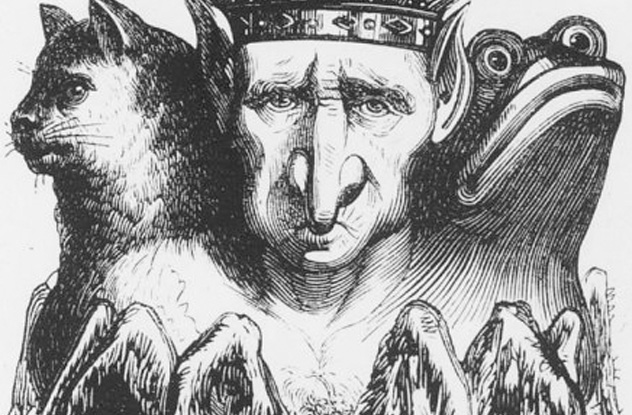
The Pseudomonarchia Daedonum was written by the famed 16th-century physician and demonologist Johann Weyer, who was greatly inspired by his former teacher, celebrated German occultist Heinrich Cornelius Agrippa. It is the appendix to his seminal work against the persecution of witchcraft, the Praestigiis Daemonum, hailed by Sigmund Freud as one of the most important books of all time.
The Pseudomonarchia Daedonum is a catalog of 69 noble demons—prominent members of Hell’s monarchy—their specialties and the methods of conjuring them. Naberius, for example, is a marquess who comes in the form of a crow and “maketh a man amiable and cunning in all arts.” Foras is a president who “recovereth lost things and discovereth treasures.” Other members of the demonic aristocracy include Haagenti, who can turn water into wine, Shax, who steals horses and robs people’s sight and hearing, and Eligos, who can see the future of wars and the fates of soldiers.
Weyer, however, was a devout Christian who approached the prospect of conjuring these Hell-bound spirits with great caution. He omitted key details of the rituals and warned those who read the Pseudomonarchia against imitating this “proof of folly.”
2Sworn Book of Honorius
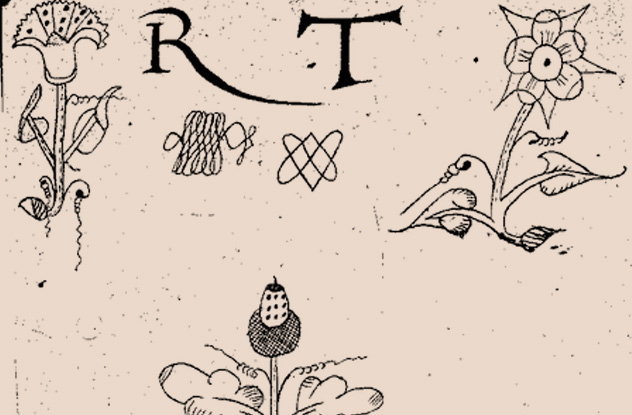
Also known as the Liber Juratus Honorii, the Sworn Book of Honorius is a medieval grimoire and defense of ritual magic rumored to be the work of Honorius of Thebes, a mysterious, possibly mythological figure who has never been identified. The book begins with scathing criticism of the Catholic church. The Church, a staunch enemy of the dark arts, has been corrupted by the devil, whose goal is to doom humanity by ridding the world of the benefits of magic.
The Sworn Book makes lofty demands of its practitioners. Only three copies of the book can be made, anyone in possession of the book who cannot find a worthy magician to inherit it must take it to their grave, and all adherents must “utterly forbear the company of women.”
Like many other grimoires, its rituals focus largely on summoning angels, demons, and other spirits to gain knowledge and power. By repeating long-winded orations, the practitioner is promised a wealth of scintillating abilities. These powers range from the awesome (causing floods and destroying kingdoms) to the eerie (seeing into purgatory and knowing the hour of your death). Among its most malign spells are ones to “cast sickness into whom you will,” “to cause discord and debate,” and “to kill whom you will.”
1The Book of Abramelin the Mage
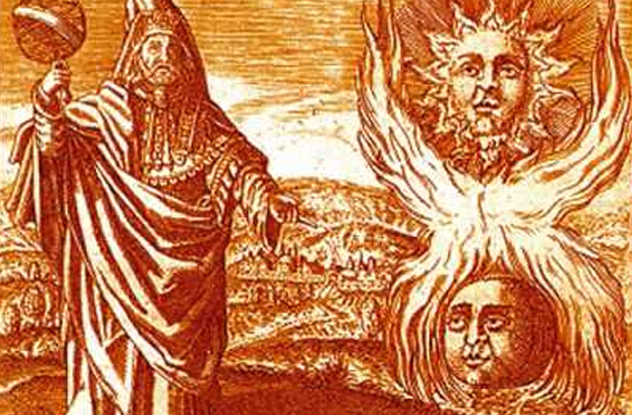
Written in the 15th century, the Book of Abramelin the Mage is one of the most prominent mystical texts of all time. It is the work of Abraham von Worms, a Jewish traveler who purportedly encountered the enigmatic magician Abramelin during a voyage to Egypt. In exchange for 10 florins and the promise of piety, Abramelin gifted this manuscript of magic to Abraham, who then passed it on to his son Lamech.
Abramelin’s ritual, referred to as “the operation,” is an arduous one. It consists of 18 months of prayer and purification, which is only recommended for men of sound health between the ages of 25 and 50. Women in general are discouraged from undertaking “the operation” because of their “curiosity and love of talk,” although an exception can be made for virgins. If the tenets of “the operation” are adhered to strictly and with unwavering devotion, you get in touch with your Holy Guardian Angel, who will grant you a wealth of powers. These powers include necromancy and divination, precognition, control of the weather, knowledge of secrets, visions of the future, and the ability to open locked doors.
The book relies heavily on the power of magic squares—unique words arranged into puzzles. Like the Icelandic staves in the Galdrabok, these squares contain mystic and occult properties when written out. For example, the word “MILON” reveals the secrets of past and future when written on parchment and placed over the head, while “SINAH” brings war. The author warns that some magic squares, like “CASED” are too sinister ever to implement.
This text had a profound impact on famed occultist Aleister Crowley, who claimed to have experienced several supernatural occurrences after embarking on the ritual and the Hermetic Order of the Golden Dawn, a 19th-century British magical order. Crowley later used the book as the foundation for his own system of magic.
K. Fane has never summoned any spirits but has accidentally summoned the fire department during a failed candlelit seance to contact the ghost of Theodore Roosevelt. She lives in California.








